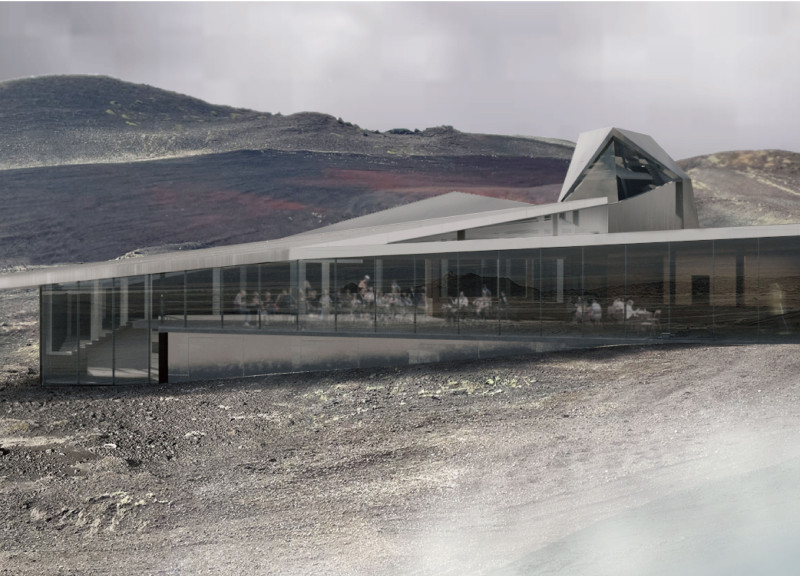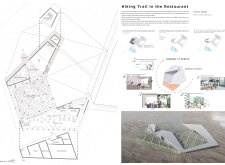5 key facts about this project
The design is situated in Iceland and looks at how cultivated lands can connect with nature. In a restaurant, a greenhouse stands at the center, allowing plants to grow in a controlled climate. The aim is to create a unique experience for visitors, reflecting the balance between the natural landscape and human activity, while highlighting the importance of local farming in this stunning environment.
Spatial Configuration
Paths throughout the building are designed to resemble hiking trails, inviting visitors to explore varied elevations and plant life. This layout gives different views and enhances a sense of discovery. As people move through the space, they engage more with their surroundings and gain insight into how food is grown within the greenhouse.
Functional Zoning
The building divides into three main parts, placing the greenhouse in the middle. This organization helps maintain a smooth flow between areas for dining and learning. The angular shapes of the design echo the volcanic landscape nearby, creating a strong visual connection to the environment while serving practical needs.
Material Selection
Concrete, coated steel, and aluminum are the key materials used in the construction. The concrete base ensures stability and durability. Coated steel makes up the framework, supporting the roof and providing strength. The aluminum cladding on the roof is designed for rainwater collection, enhancing the building's sustainability efforts. These choices focus on functionality and resilience in the face of Iceland's challenging climate.
The greenhouse not only supports food cultivation but also plays a role in education. Visitors can learn about the growth cycles of different plants. Natural light fills the interior, highlighting the connection between the cultivated plants and the wild landscapes outside, showing how both can coexist.






















































